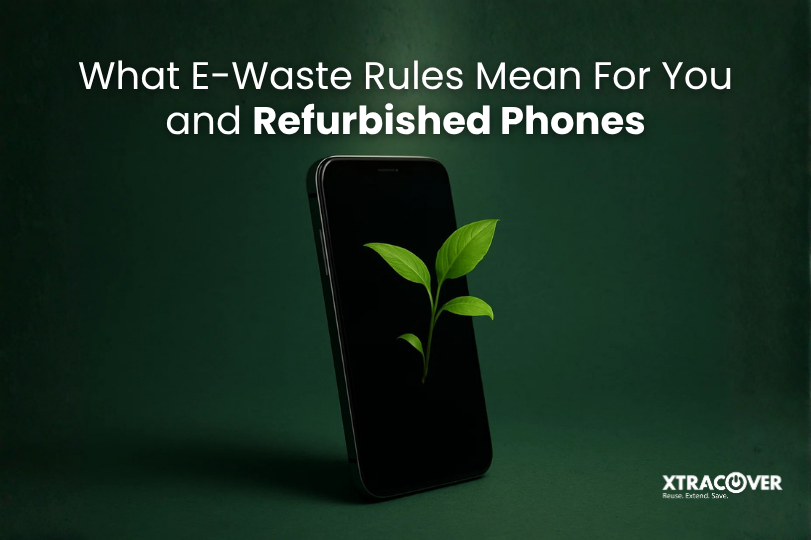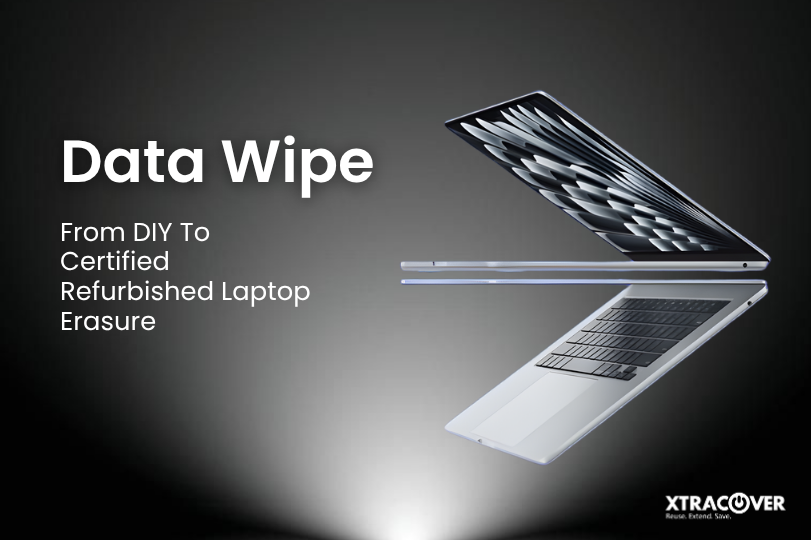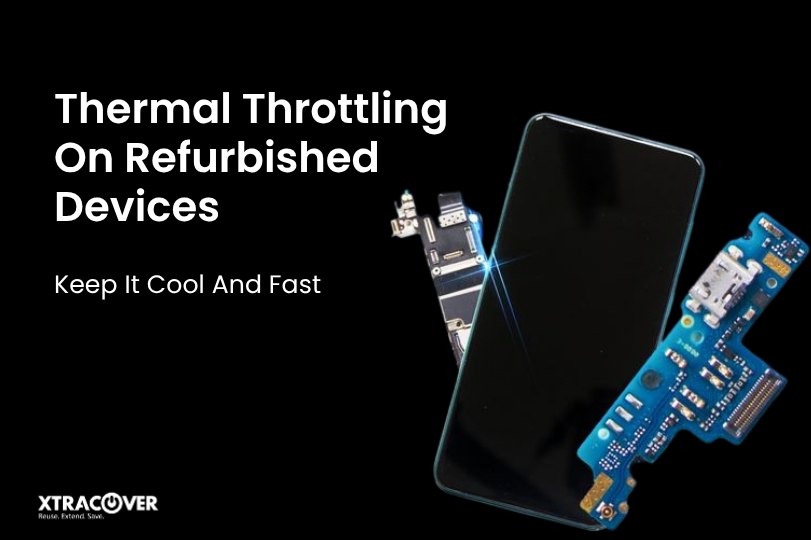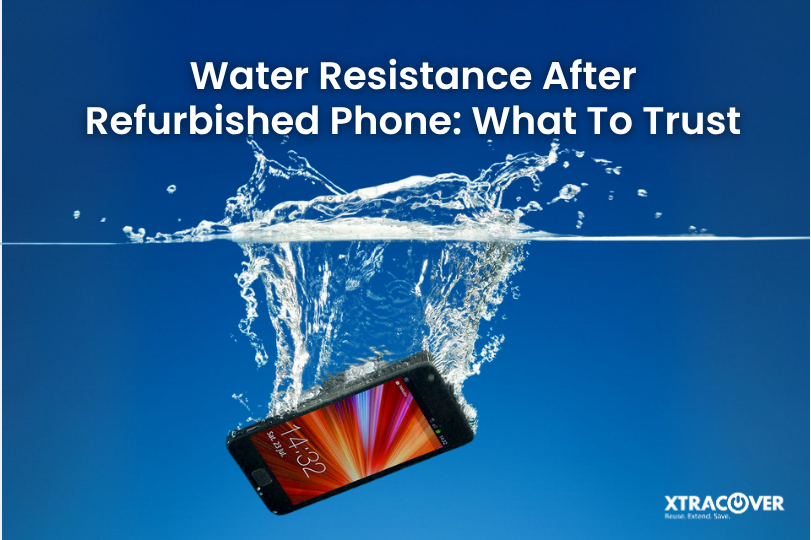It only takes a second. A splash on your way to work. A phone forgotten in your pocket during a sudden rain shower. A glass of water was knocked over on the dinner table. And suddenly, your most-used device, the one you rely on for work, chats, memories, and money, is soaked.
We’ve all been there. And if your immediate instinct is to search for “fix my phone” or run for the nearest bag of rice, hold up.
Water damage is one of the most common and most preventable reasons people look to get a new phone when they switch plans or start comparing refurbished mobile India options. Before you give up on your device – or make a rash decision – let’s go through what to do (and equally important, not to do) if your phone takes a dive to its dismay.
Step 1: Power Off the Phone. Don’t Check If It Still Works.
The moment your phone gets wet, shut it down. Don’t check notifications, don’t try to call, and don’t open the camera “just to see”. Electricity and water don’t mix, whether you have a premium iPhone, a flagship Android or a budget phone.
Most modern phones have some protection against water, but even waterproof phones are not bulletproof! Water can enter through speaker grills, charging ports or mic holes. Powering down reduces the risk of a short circuit.
And please, resist the urge to plug it in “just for a second”. That’s often when the real damage happens.
Step 2: Remove Everything from the Phone – Case, SIM, SD Card
At this point, you will need to disassemble your device. This means that you will need to remove the phone from its case and take out its SIM card and SD card, should you have one, while wiping it down gently with a soft, lint-free cloth.
If you had the foresight to carry a waterproof bag for your phone, count yourself lucky. These small accessories can save thousands of rupees in damage. If you didn’t, now might be a good time to keep one in your bag for next time.
Step 3: Don’t Shake or Blow Into It
It might sound crazy, but shaking the phone or blowing into the ports can actually do more harm than good. Moisture could be forced farther into the phone, particularly toward vulnerable areas like the motherboard or charging circuitry.
If you are attempting to get water out of the phone, do not use hair dryers or place it in the sun. Heat can warp parts or cause condensation within the screen. This only adds another problem to the list: screen ghosting or touchscreen malfunction.

Step 4: Skip the Rice – Use What Actually Works for Your Phone
The rice trick? Popular. Effective? Not really.
Rice Yes, rice absorbs moisture, but it’s not the best choice. It also leaves behind tiny dust particles that can lodge inside ports and speakers. A much better approach is to place the phone in an airtight container with silica gel packets, those little sachets you find in new bags or shoeboxes.
They’re made specifically to draw water out and are more effective (and ultimately safer) than rice. No silica on hand, place inside a vacuum-sealed environment where dry air will then pull moisture out of the internals.
Step 5: Wait. And Then Wait Some More.
Here’s where patience pays off. Give your phone at least 24-48 hours to dry fully. You may feel tempted to turn it on early, especially if it’s your only device. But switching on a wet phone too soon is the number one reason people go from a fixable issue to a full-on replacement.
Whether you use a budget Android or a high-end Apple device, moisture affects all electronics equally. If after 48 hours it still doesn’t power on, it’s time to call the pros.
Step 6: Time to Diagnose or Replace?
If your phone refuses to boot up or behaves abnormally, like with dim screens, phantom touches, or rapid battery drain, you need a diagnostic check. Many service centres now offer moisture detection tools that determine where the liquid has reached. If the core components (like the logic board or screen connectors) are damaged, repair might not be the smartest choice.
This is where India’s growing market for refurbished mobile India becomes relevant. Why pour ₹15,000-₹30,000 into repairs when you can get a certified refurbished phone, tested, cleaned, and warranty-backed, for less?
Whether you want to fix my phone or get a new phone when you switch, the refurbished route often offers better value.
Why Refurbished Makes Sense (Especially After Water Damage)
Refurbished doesn’t mean second-hand junk. A professionally refurbished phone is checked across multiple parameters, reset to factory conditions, and cosmetically restored. Especially in India, platforms specialising in refurbished mobile phones now cater to smart buyers who understand the value of circular tech.
Here’s why it makes sense:
- Lower price: 30-50% off new
- Warranty options: Most refurbished suppliers will offer between 3 and 12 months
- Environmental conservation: You will help reduce e-waste by prolonging the life of a device
- Choice of devices: From low-end Samsung to flagship iPhones, there is far more choice
So when that repair cost exceeds ₹8,000 pause and ask yourself, is this time to make a change? If yes, choose smart and refurbished.
Mistakes to Avoid That Can Make It Worse
Here are a few common missteps that worsen water damage:
- Charging too soon – Leads to instant short circuits.
- Using compressed air – Drives water further into internal compartments.
- Baking your phone – Heat can melt adhesive layers or damage the battery.
- Skipping backup – If your phone still works briefly after exposure, immediately back up your data. Don’t wait.
- Delaying action – Every hour counts. Dry it out and diagnose fast.
Prevention Is Still the Best Cure
Monsoons aren’t going anywhere. Nor are accidental spills or dropped phones in bathtubs. The smartest move? Preparation.
Here’s how:
- Invest in a good waterproof phone or water-resistant case.
- Always carry a waterproof bag for your phone when travelling.
- Don’t keep your phone in back pockets or exposed in side bags.
- Store silica gel packets in your bag or desk drawer.
- Subscribe to device protection or accidental damage plans.
When You Need a New Phone, Choose Responsibly
If your phone can’t be saved and you need to switch, pause before rushing into EMI traps. Yes, the lure of the latest iPhone or flagship Android is real. But in reality, your mobile needs haven’t changed much.
Platforms that specialise in refurbished mobiles in India often stock top-tier models like the iPhone 12, Samsung S21, or OnePlus 9R, all refurbished, all tested, and all under budget.
It’s a financially and environmentally smart way to get a new phone when you switch, without feeling like you’ve burnt a hole in your pocket.
FAQs
1. How long can I wait before I switch my wet phone back on?
Wait a minimum of 24-48 hours. The longer, the better.
2. Is a waterproof phone completely safe in rain?
Not always. Waterproof ratings are done under certain circumstances. Rain, steam, or a drop can get in, especially at ports.
3. Can I DIY my water-damaged phone?
Unless you have experience working with phone hardware, no. Opening the phone without the correct tools can void warranties and can create additional damage.
4. What is better: repair or change to refurbished?
If the repair cost is more than half of what a refurbished of the same phone would cost, it usually makes sense to switch.
5. What is the quickest way to dry water?
Silica gel in an airtight box is the best option. Avoid heat, rice, or excessive handling.
Closing Note
A wet phone doesn’t have to mean a dead phone or a drained bank account. The key’s in your first few actions. Be quick, be rigorous, and if you decide to replace your device, know you have many inexpensive, reputable options.
Whether you resolve to fix my phone or hanker for a look at the refurbished mobile India world, just know mistakes happen. What matters is how you recover. And sometimes, a little water might just be the push you needed to upgrade, responsibly.

















